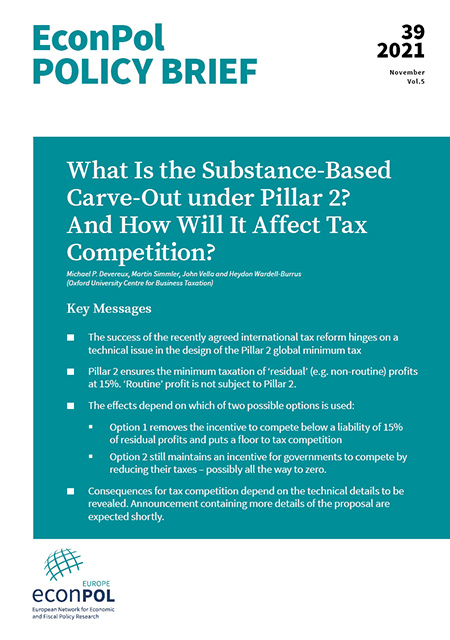What Is the Substance‐Based Carve‐Out under Pillar 2? And How Will It Affect Tax Competition?
On 8 October 2021 Secretary of the Treasury Janet L. Yellen claimed that: “As of this morning, virtually the entire global economy has decided to end the race to the bot-tom on corporate taxation.” Tax competition threatens the long‐term viability of the existing international corporate tax system and bringing it to an end would thus be a veritable game‐changer. But is Secretary Yellen correct? Will the OECD/G20 Inclu-sive Framework’s “Two Pillar Solution” that has now been agreed by 137 jurisdic-tions, in particular the global minimum tax found in Pillar 2, bring competition in corporate taxation to an end? This note examines one of the factors that will deter-mine the impact of Pillar 2 on tax competition: the design of the substance‐based carve‐out.
Key messages:
- The success of the recently agreed international tax reform hinges on a technical issue in the design of the Pillar 2 global minimum tax.
- Pillar 2 ensures the minimum taxation of ‘residual’ (e.g. non-routine) profits at 15%. ‘Routine’ profit is not subject to Pillar 2.
- The effects depend on which of two possible options is used:
- Option 1 removes the incentive to compete below a liability of 15% of residual profits and puts a floor to tax competition.
- Option 2 still maintains an incentive for governments to compete by reducing their taxes – possibly all the way to zero.
- Consequences for tax competition depend on the technical details to be revealed. Announcement containing more details of the proposal are expected shortly.
Michael P. Devereux, Martin Simmler, John Vella and Heydon Wardell‐Burrus: “What Is the Substance‐Based Carve‐Out under Pillar 2? And How Will It Affect Tax Competition?,” EconPol Policy Brief 39, November 2021
